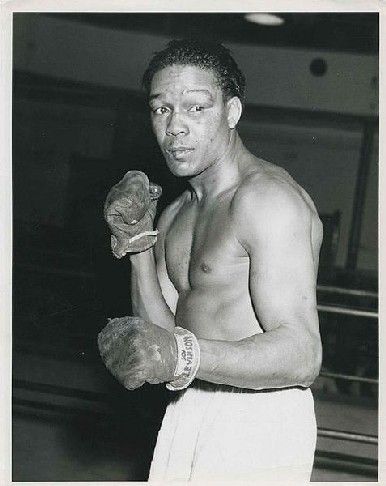Isaiah Chase’s birthday was only three weeks away when a white gentleman knocked on the door of 3360 Delgany Street in Denver, Colorado. It was January 7th 1920. The boy was going to be six years old but chances weren’t good that anyone would remember. His mother, Nancy Walters, was black, single, and not sure when her birthday was. She told the census taker she was twenty though she was actually a year older if an earlier census is accurate.
Only scant details linger about the boy’s father. He was from Missouri, impregnated Nancy when she was a teenager and then left, or died. He represents a specter that dwells beneath the poverty line; a specter that also happens to be the strongest predictor of juvenile delinquency: fatherlessness. It would be expected that the boy at Nancy’s knee reminded her of the man she once knew and loved or thought she loved. Perhaps the strikingly large and maroon eyes looking up at her were inherited from that man. Nancy had given the boy a Biblical name, the name of a prophet, but his surname was his father’s -and like his father, Isaiah Chase would break her heart.
After Isaiah’s birth in Sherman, Texas, Nancy did what countless young mothers have always done in similar circumstances; she went home to her parents. The boy’s memories began at his grandfather’s house in Denver. Despite an advanced age, Jacob (called “Little) Walters worked long and hard as an ash hauler for the city. Aunt Rachel was a cook at a hotel and Nancy got a job as a cook for a private household. She probably walked to the wealthy Country Club District a few miles away. Isaiah’s grandmother stayed home. She could neither read nor write, but the boy learned to mind his manners from this old woman who in all likelihood was born a slave.
Ten years later, the depression had hit and drought and windstorms began in the region that soon ravaged the Midwest. Times were tough. Nancy was living with her sister, now a widow, in the small coal mining town of Walsenburg in southern Colorado. They were a minority among minorities in a community of first and second generation Mexicans. Rent was $10 a month –a bit above average for the area, and both women had to work from dawn to dusk with or without Sundays off.
Nancy had lost control of her son by then.
Isaiah was all of twelve years old when first handcuffed by the police. The charge was auto theft. He may have stolen a police car. The Denver Post reported that a patrolman left his car at 14th and Champa streets, went into headquarters for a little while, and emerged to find his car gone. Red-faced, the patrolman searched for an hour before making an alert. The car was found ditched only two streets away. It was a joyride. The next day, Isaiah was arrested.
Colorado, specifically Denver, had recently revamped its court system at the behest of a reformer judge named Ben Lindsey. Lindsey insisted that a juvenile court be created that would act as parens partriae- “on behalf of instead of “against the misbehaving child. Judges assumed the role of father figure and applied a “remedy with wide discretion as to the length of commitment. One of the criticisms of this model is that minors often served longer terms in the juvenile system than they would have had they been convicted by an adult court. Isaiah was given an ‘indeterminate sentence’ for stealing a car. Despite the fact that it was his first offense, he was sent to the Colorado State Industrial School for boys in Golden. Almost three years later he was released.
Judge Lindsey’s child-saving theories failed in this case. Isaiah’s natural complexion had barely returned before he was collared again. Burglary was the charge. He was sent back to Golden for another indeterminate sentence with the label “incorrigible attached to his name. In the spring of 1930, Isaiah was one of only ten African Americans among 290 inmates. In the fall, he escaped and headed thirteen miles east to Denver. The police were alerted. It’s all too easy to envision a reunion of sorts between Isaiah and his hoodlum friends, a reunion that broke up as sirens sent them scattering in every direction. Isaiah was caught and promptly returned to the industrial school to complete his term, plus an extension.
On New Year’s Eve 1931, Isaiah was picked up for vagrancy in Denver, given a thirty-day suspended sentence, and turned loose. Three days later he was picked up for vagrancy again, given a ninety-day suspended sentence, and was told that he had 6 hours to leave the city. He didn’t. On the afternoon of January 22nd, he and Leonard Hartley (a fellow inmate at Golden) were arrested by the Denver police for a crime that took place within walking distance from where Leonard lived at his uncle’s address. Under questioning, the boys admitted that they stopped a junkman’s wagon in an alley, pulled him out, and attacked him. Isaiah allegedly hit him with a lead pipe. They denied that their motive was robbery but said that they “had it in for the junkman.
Isaiah and Leonard were charged with “assault to kill and held in the city jail.
The junkman lay in critical condition at the hospital.
The charge was changed to “assault with intent to rob and Isaiah served five months and two weeks at the Colorado State Reformatory in Buena Vista. He was released in August. By November he was back at it again. The police, this time in Pueblo, apprehended him as a fugitive with a burglary charge over his head. He was given a break by the judge and turned over to the custody of his mother in Walsenburg. Only a few weeks later, Isaiah broke into a store near his house. Authorities charged him with burglary, he pled guilty, and he was shucked off to the reformatory for another seven months.
The intake officer asked him for a statement about his crime and Isaiah had a hangdog reply, “I think that it is fair that I be sent to this reformatory.
When asked about his father, he offered no name. He said his father was dead.
Was he?
Recall that his mother did not reject the surname of the mystery man who impregnated her. She may have done better than that. She gave Isaiah the middle name of James though that name turns up nowhere in the Walters family. Where did this name come from? Nancy told the census taker that Isaiah’s father came from Missouri. An examination of U.S. Census Records in 1920 and 1930 uncovers an African American man by the name of “James A. Chase living in Blackwater, Missouri. He was a laborer who owned a house and had at least seven children. It is entirely plausible that he crossed the border in the spring of 1913, met and had a brief relationship with the teenaged Nancy Walters when he was about thirty-eight years old, and then left.
Isaiah probably grew up angry at a lot of things. Not least among these would have been the hazy outline of the stranger who sired him. Look again at this eighteen-year-old as he stands and answers a set of routine questions. He is about to begin a fourth term behind concrete walls and we can imagine the thoughts and feelings swirling in his mind…
A strange, stern white man asks about his father without even looking up from the logbook.
…His father?
A father is meant to teach with a hand that is familiar and firm. He is supposed to protect his son from the snares of the world and raise him up straight and strong. Without him, other influences fill the voids.
The young man standing in the reformatory is no different from any other American boy then or now. Isaiah wants to be strong, but without a guiding force, he mistakes strength for violence. He desires good things, but the hand above him wasn’t big enough to teach patience and industry, so he steals. He yearns to define himself, but the most important role model in his life, his father, is long-gone. Other influences filled the voids. Isaiah sought out peers just as empty as he was and together they went astray with stunted definitions. Confusion pointed to frustration, and frustration to anger and recklessness. All of this eventually led to the rejection of those values that seemed to have rejected him.
Isaiah’s path led to crime; but it began with a void and perhaps a cry. A father is not supposed to abandon his offspring.
“What is your father’s name? The officer asks.
Isaiah shrugs his shoulders.
“Where is your father?
“He’s dead.
He may have meant something a bit more specific: He’s dead to me.
Isaiah ran afoul of the law nine times between the ages of twelve and eighteen. This places him in a category since identified by criminologists as the ‘chronic 6%’. These delinquents are arrested at least four times and are responsible for a disproportionate amount of serious offenses. Instead of aging out, they often continue their criminality into adulthood.
Isaiah’s many aliases demonstrate his lifestyle and as a result, reassembling his record makes for a tough chase. His name is identified here as “Isaiah Chase, there as “James Walters. It is also listed as “Isaiah James Chase and “Jack Walters. One gets the impression that he didn’t know who he was, and he clearly had little faith in his future.
Isaiah and his friends smoked and drank bootleg liquor and did what they wanted, when they wanted. One of his associates was a thirty-three year old convicted murderer known as “Snookums. In September 1933, police and railroad officers broke up a ring of car thieves, burglars, and boxcar thieves operating at the Santa Fe train yards in Colorado Springs. A fence was at the thieves’ headquarters late one night haggling over the price of 60 pairs of corduroy pants and 42 pairs of shoes when the police crashed in.


 Thanks:
Thanks:  Likes:
Likes:  Dislikes:
Dislikes: 



 Reply With Quote
Reply With Quote ?
?
Bookmarks